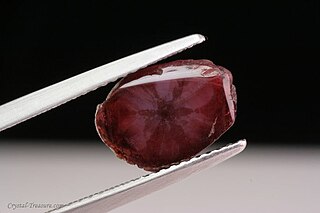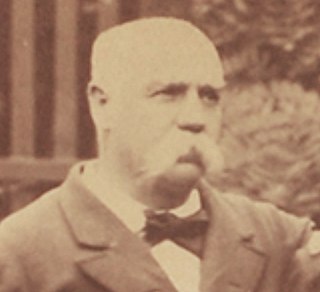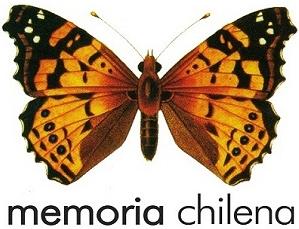
The vicuña or vicuna is one of the two wild South American camelids, which live in the high alpine areas of the Andes; the other camelid is the guanaco, which lives at lower elevations. Vicuñas are relatives of the llama, and are now believed to be the wild ancestor of domesticated alpacas, which are raised for their coats. Vicuñas produce small amounts of extremely fine wool, which is very expensive because the animal can only be shorn every three years and has to be caught from the wild. When knitted together, the product of the vicuña's wool is very soft and warm. The Inca valued vicuñas highly for their wool, and it was against the law for anyone but royalty to wear vicuña garments; today, the vicuña is the national animal of Peru and appears on the Peruvian coat of arms.

The Changos, also known as Camanchacos or Camanchangos, are an Indigenous people or group of peoples who inhabited a long stretch of the Pacific coast from southern Peru to north-central Chile, including the coast of the Atacama Desert. Although much of the customs and culture of the Chango people have disappeared and in many cases they have been considered extinct, in Chile they are legally recognized as an original indigenous people since 2020, and about 4,725 people self-declare that they belong to this ethnic group.

Cueca is a family of musical styles and associated dances from Chile, Argentina, and Bolivia. In Chile, the cueca holds the status of national dance, where it was officially declared as such by the Pinochet dictatorship on September 18, 1979.
El Caleuche or The Caleuche, also known by other names such as Buque de Arte or the Barcoiche, is a legendary ghost ship from Chilote mythology in southern Chile.

Ana Carolina Ardohaín Dos Santos is an Argentine model, television personality, dancer, television host and actress. She is widely known by the nickname Pampita, a diminutive for La Pampa, the province where she was born.

The General Captaincy of Chile, Governorate of Chile, or Kingdom of Chile, was a territory of the Spanish Empire from 1541 to 1818 that was, initially, part of the Viceroyalty of Peru. It comprised most of modern-day Chile and southern parts of Argentina in the Patagonia region. Its capital was Santiago de Chile. In 1810 it declared itself independent, with the Spanish reconquering the territory in 1814, but in 1818 it gained independence as the Republic of Chile. It had a number of Spanish governors over its long history and several kings.

Carbuncle is another name for a deep red almandine gemstone that has been cut with a smooth, convex face in a method called cabochon. Traditionally, the term referred to any red gemstone, most often a red garnet.

The Alicanto is a nocturnal mythological bird of the desert of Atacama, pertaining to Chilean mythology. Legend says that the alicanto's wings shine at night with beautiful metallic colors, and their eyes emit strange lights. The color of the wings may indicate the type of ore it eats, golden if from a gold mine and silvery if from a silver mine. Some descriptions also portray the color of the wings as copper-green. Also the cave-dwelling alicanto female will lay just two eggs, of gold or silver, depending on the ore it feeds on.
Many Basques arrived in Chile in the 16th, 17th, 18th, 19th and early 20th century from their homeland in northern Spain and parts of southwestern France, as conquistadors, soldiers, sailors, merchants, priests and labourers. Due to their traditional hard work and entrepreneurship, many of them rose to the top of the social scale and intermarried into the Chilean elites of Castilian descent, giving birth to the new Basque-Chilean aristocracy in Chile. This union is the basis of the Chilean elite of today. But also, they immensely contributed to the ethnic make up of the bulk of the Chilean population. The Basque settlers also intermarried into the Mestizo and Castizo population of central Chile in the middle of the colonial period to form the large Criollo population that exists in Chile today; Castizos create modern middle and lower classes. Many years after the first waves of settlers, thousands of Basque refugees fleeing Spanish Civil War in 1939 also settled and have many descendants in the country and have even intermarried with Spanish ethnic groups other than Castilians, and other European ethnic groups. An estimated 1.6 million (10%) to 5 million (30%) Chileans have a surname of Basque origin. This figure is to the least as the number of Basque descendence is great and plentiful. Due to Basque migration, Chile has a higher number of people of Basque descent than the Basque Country itself.

Benjamín Vicuña Mackenna was a Chilean writer, journalist, historian and politician. Vicuña Mackenna was of Irish and Basque descent.

Between 1830 and 1850, Chilean silver mining grew at an unprecedented pace which transformed mining into one of the country's principal sources of wealth. The rush caused rapid demographic, infrastructural, and economic expansion in the semi-arid Norte Chico mountains where the silver deposits lay. A number of Chileans made large fortunes in the rush and made investments in other areas of the economy of Chile. By the 1850s, the rush was in decline and lucrative silver mining definitively ended in the 1870s. At the same time, mining activity in Chile reoriented to saltpetre operations.
Sister Josefa de los Dolores Peña y Lillo Barbosa, OP was a Dominican nun and a self-taught writer of the Chilean Colonial period ascribed to Catholic confessional discourse produced by Indian nuns in South American cloisters during the fifteenth and seventeenth centuries. She cultivated the epistolary genre, but also rarely wrote poetry.

Memoria Chilena is a Chilean cultural website which, according to its own words, "offers investigations and documents related to key topics which make up the Chilean identity, accessible through the areas of history, literature, social sciences, music, and visual arts." Memoria Chilena is, also, a virtual library, which preserves material from the Biblioteca Nacional de Chile and other institutions from the Dirección de Bibliotecas, Archivos y Museos (DIBAM).

Eliana Navarro Barahona was a Chilean poet. Her poetry was praised from an early date by literary critic Hernán Díaz Arrieta. Her poetry has been studied in various Chilean and foreign universities and her work appears in many national and foreign anthologies.

Sofía Eastman Cox, also known as Sofía Eastman de Huneeus, was a Chilean feminist writer and socialite. In 1915, she was a founder and president of the Ladies' Reading Circle, one of the first women's groups in Chile, dedicated "to promote and cultivate letters and the arts from the point of view of reception and production, and to improve the quality of education received by women." She also held the presidency of the Chilean Women's Red Cross from 1918 to 1921, an institution of which she was also one of the main benefactors and managers.
Juan Ignacio Méndez Aveiro is an Argentine professional footballer who plays as a midfielder for Newell's Old Boys.
Sonia Cristina Montecino Aguirre is a Chilean writer and anthropologist. In 2013, she was awarded the Premio Nacional de Humanidades y Ciencias Sociales
In Chilean folklore the entierros are legendary treasures buried in different locations by different motives. The identity of the alleged burrowers vary from case to case, sometimes being indigenous peoples, pirates and privateers like Francis Drake or the Jesuits. A significant number of the entierro legends relate to the Spanish Conquest of Chile in the 16th century. Associated to this there is a significant folklore on how to unearth the entierros.

Joaquín Alberto Montecinos Naranjo is a professional footballer who plays as a winger for O'Higgins on loan from Mexican club Tijuana. Born in Colombia, he plays for the Chile national team.













